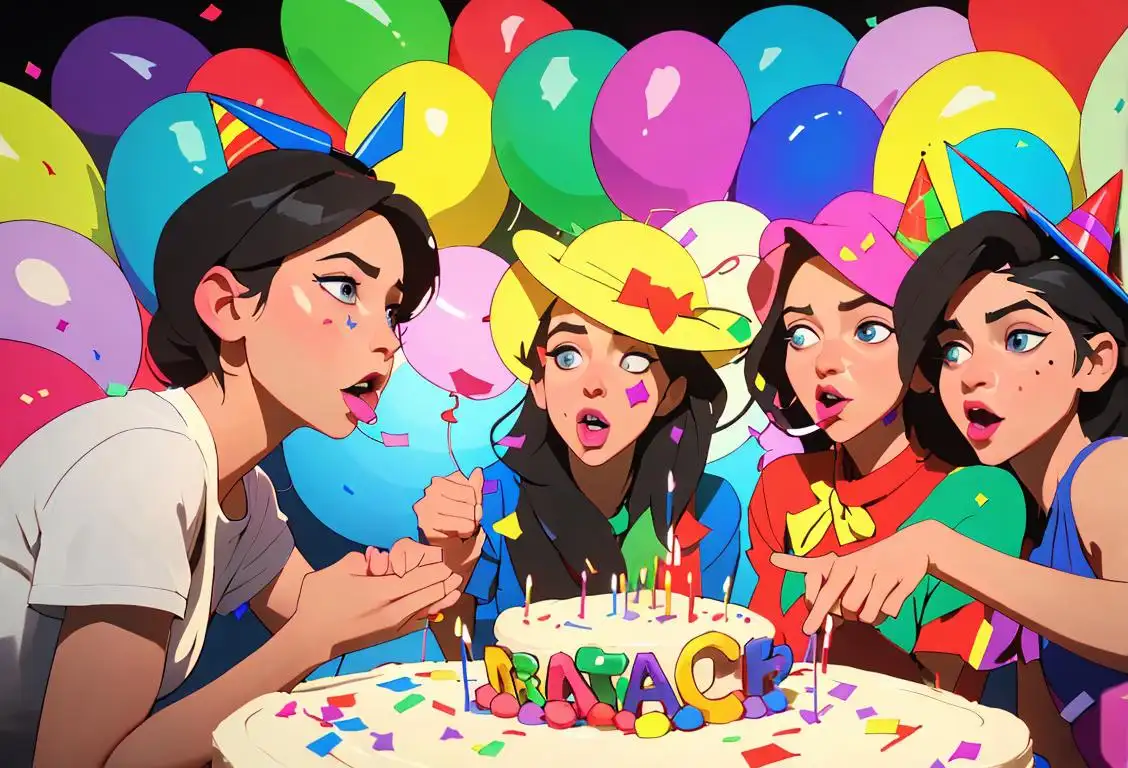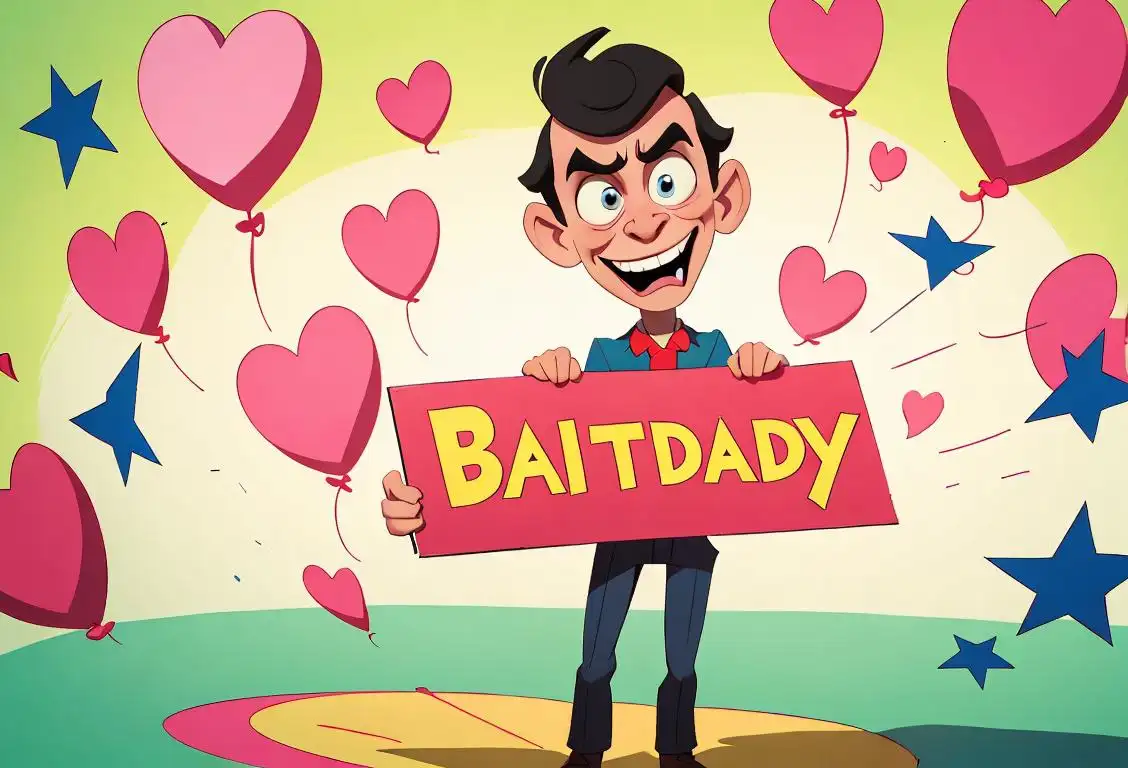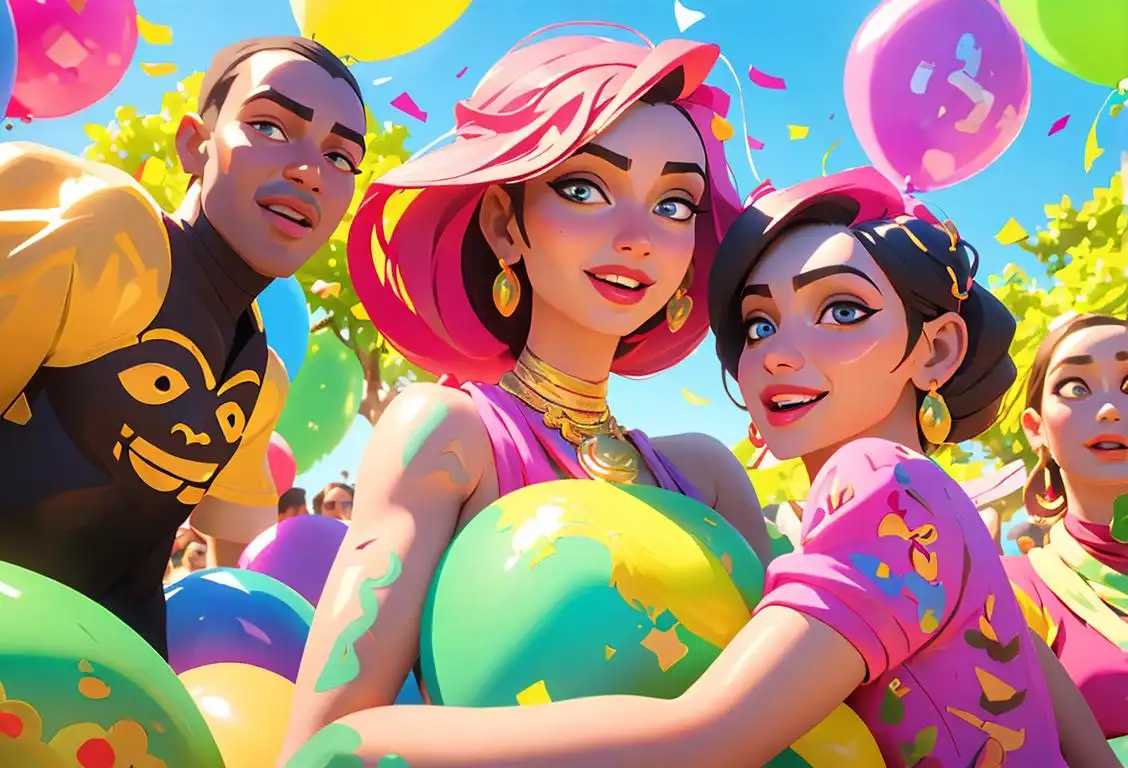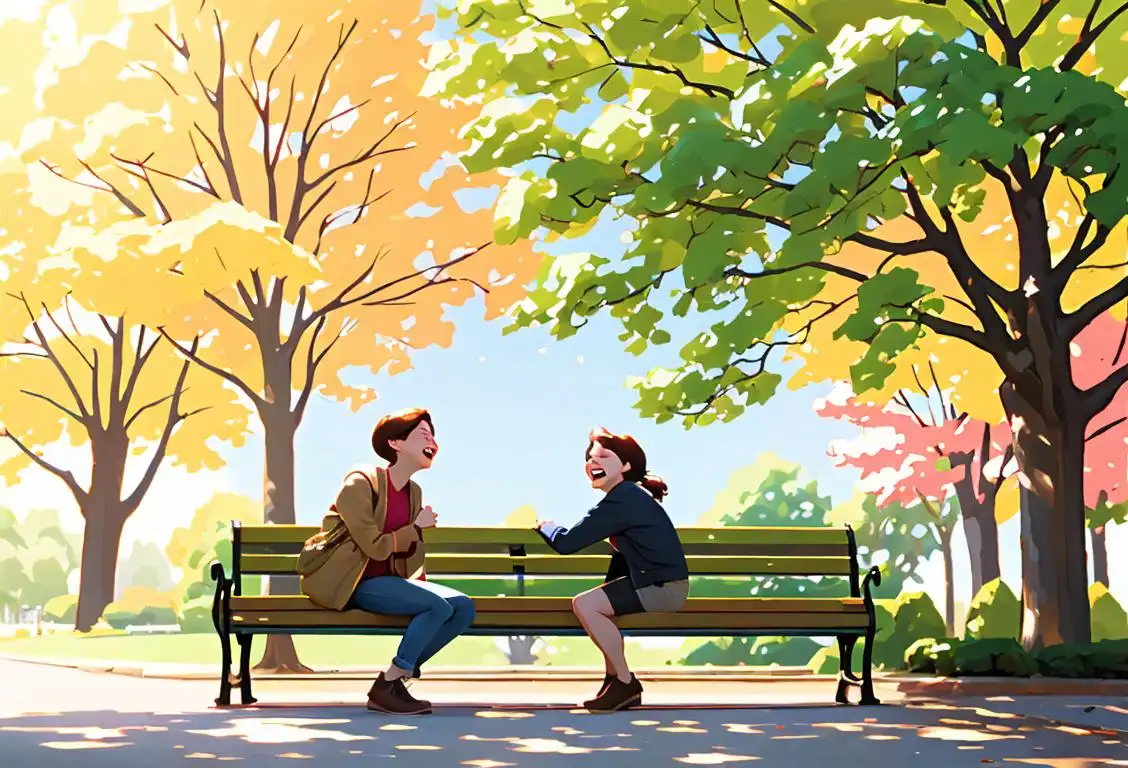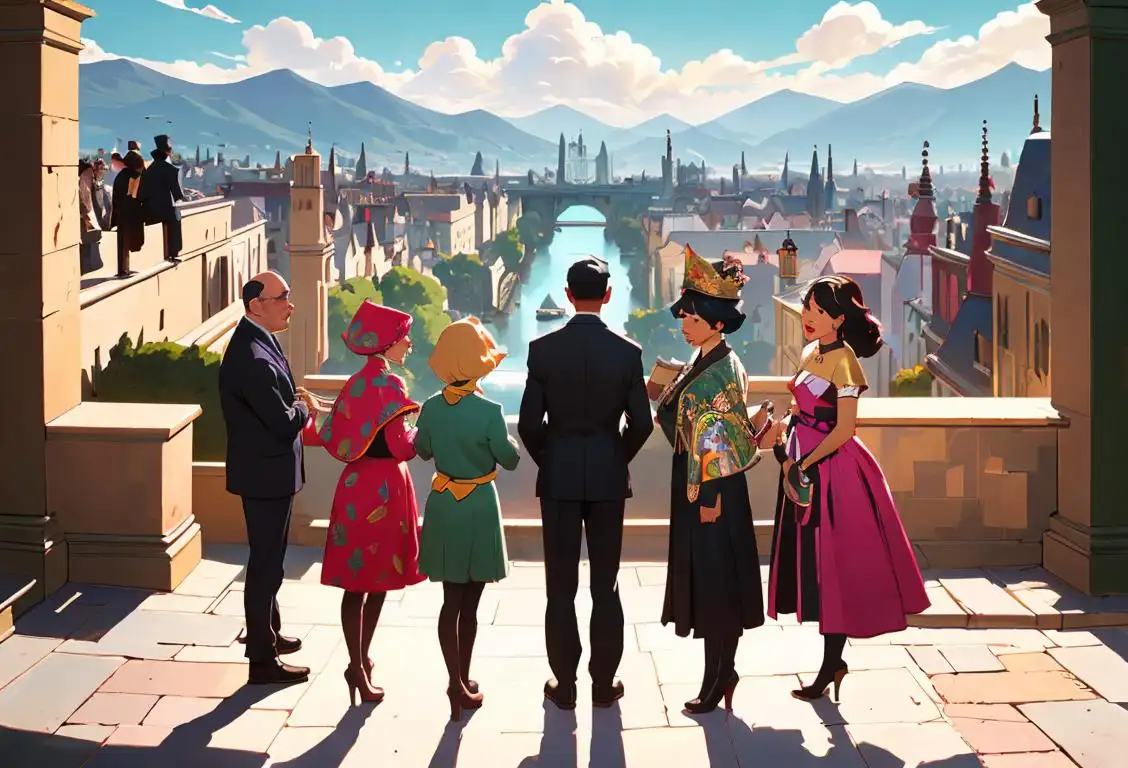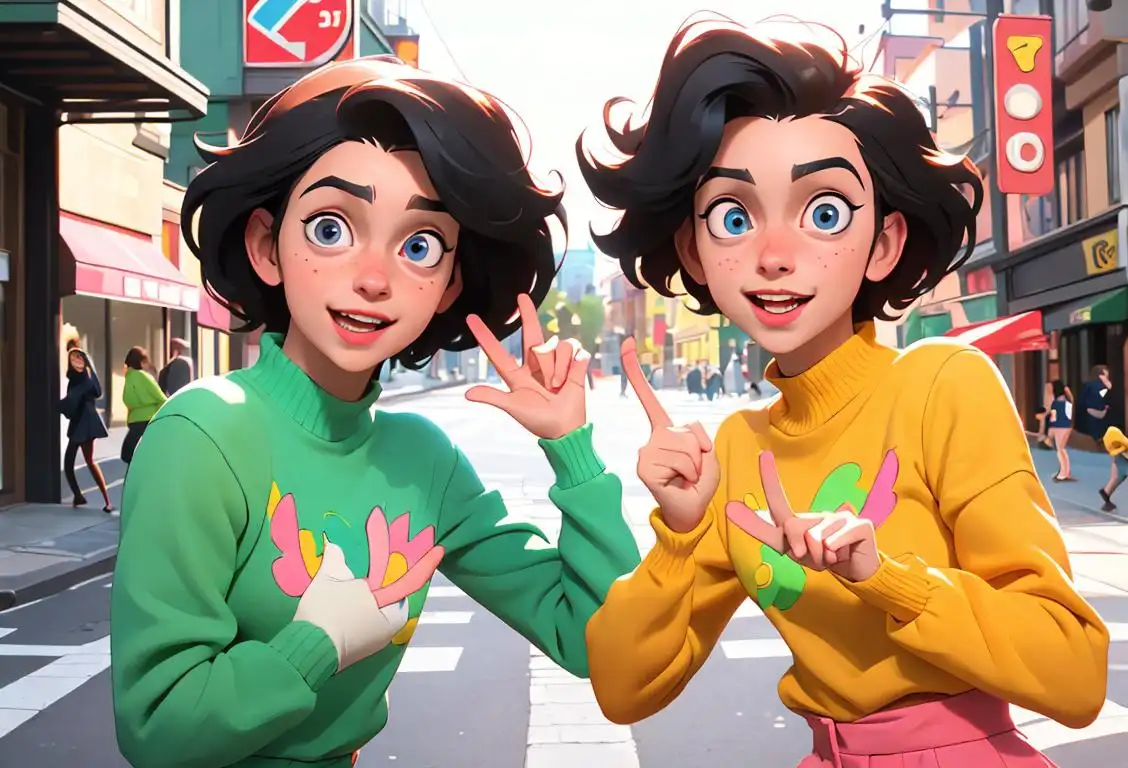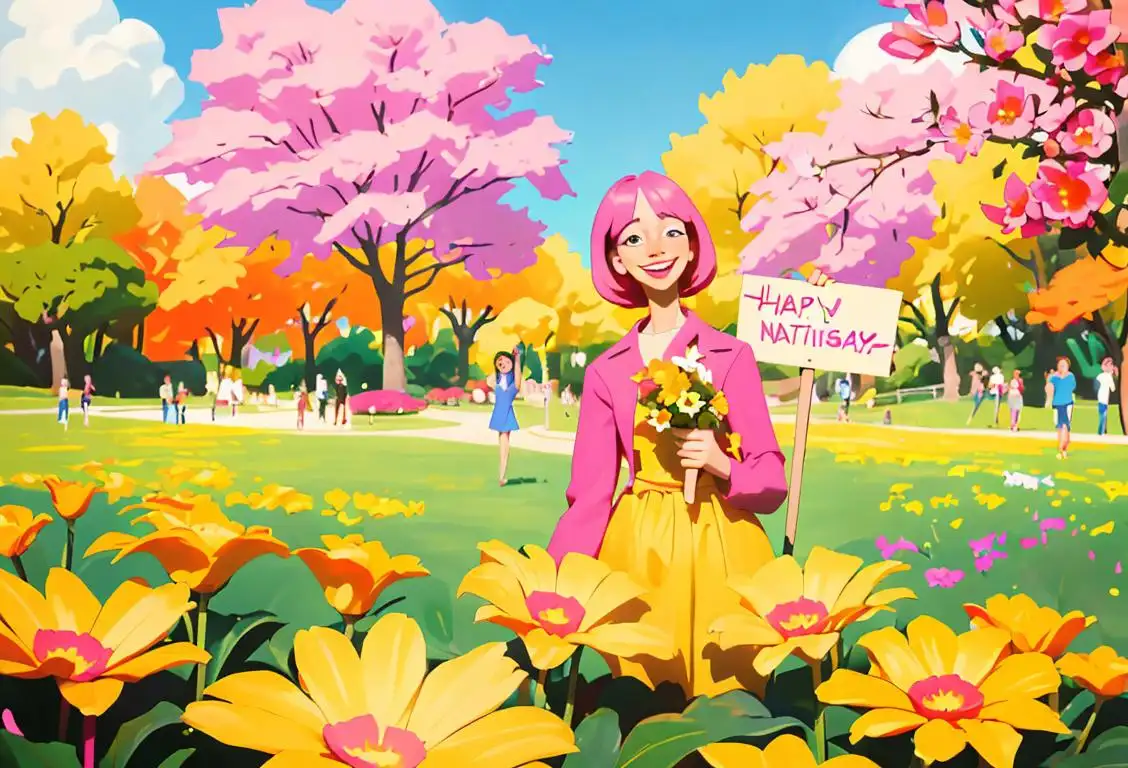National Selfy Day
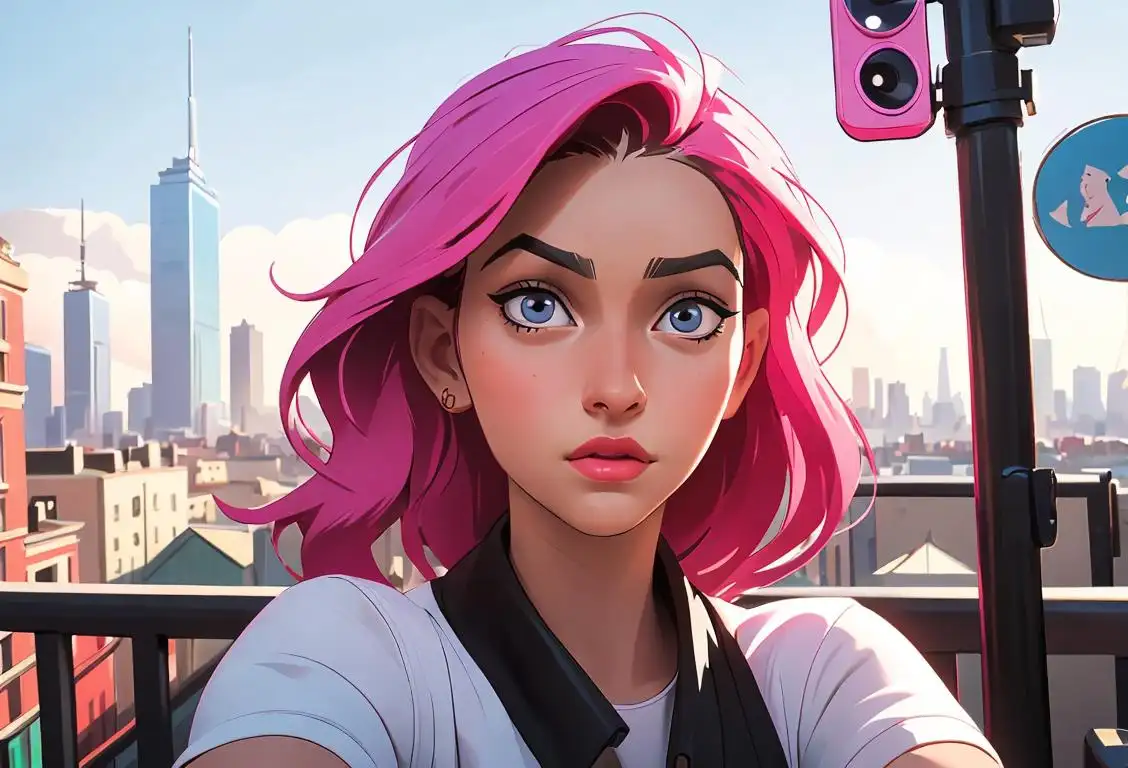
Welcome to the wild world of National Selfie Day! Get ready to pout, pose, and capture your best angle, because this is a day dedicated to the art of the self-portrait. Selfies have taken the internet by storm, and now we have a whole day to celebrate their existence. Whether you're a selfie pro or just a casual selfie-taker, National Selfie Day is the perfect opportunity to show off your best duck face or peace sign pose. So grab your phone, find your best lighting, and get ready to strike a pose like no one's watching!
When is Selfy Day?
It's national selfy day on the 21st June.
A Brief History of National Selfie Day
It all began on June 21, 2016, when the internet exploded with selfie fever. People from all walks of life were snapping photos of themselves left and right, and the phenomena took social media by storm. From celebrities to politicians to your average Joe, everyone was getting in on the selfie action.
But why June 21? Well, it just so happens that this date coincides with the summer solstice, the longest day of the year. And what better way to celebrate the extra daylight than by capturing your own reflection?
As the popularity of selfies continued to grow, National Selfie Day became an annual tradition. People began sharing their most outrageous and creative selfies, adding filters, stickers, and even props to make their self-portraits stand out.
How to Celebrate National Selfie Day
Ready to celebrate National Selfie Day? Follow these fun and fabulous tips to make the most of this self-centered holiday:
- Strike a pose: Find your best angle, perfect your pout, and get creative with your poses. Embrace your inner supermodel and work it!
- Set the scene: Find a unique background or a stunning location to add some flair to your photos. Whether it's a bustling city street or a serene natural landscape, make your surroundings pop.
- Get snap-happy: Take as many selfies as your heart desires! The more, the merrier. Experiment with different expressions, poses, and lighting to capture your selfie perfection.
- Share the love: Don't keep your fabulous selfies to yourself. Share them with the world! Post on social media using the hashtag #NationalSelfieDay and join the global celebration.
- Spread the positivity: National Selfie Day is all about self-love and embracing your unique beauty. Take this opportunity to spread body positivity and inspire others to feel confident in their own skin.
Did You Know?
Did you know that the word 'selfie' was officially added to the Oxford English Dictionary in 2013? That's right, our beloved selfie has earned its place in the dictionary alongside words like 'doggo' and 'hangry.' So the next time someone gives you a funny look for taking a selfie, just let them know that you're expanding their vocabulary!
History behind the term 'Selfy'
2002
The birth of a term
In the year 2002, the term 'selfy' made its debut into popular culture. It was first used on an Australian online forum called ABC Online in a post by a user named Hopey. The post contained a self-portrait photograph, which was described as a 'selfy'. This marked the first known usage of the term, although it was not yet widely recognized.
2002
The Birth of the Front-Facing Camera
In 2002, the Finnish company Nokia introduced the concept of a front-facing camera on their mobile phones, allowing users to capture pictures of themselves. This innovation laid the foundation for the term 'selfy,' as it provided a simple way for individuals to take self-portraits without the need for another person.
2002
Birth of the selfie
In 2002, the term 'selfie' was coined by a man named Nathan Hope, who posted a picture of himself on an online forum. The term quickly gained popularity as a way to describe a self-portrait photograph taken by an individual using their own camera. This marked the beginning of the selfie phenomenon.
2002
The Birth of 'Selfy'
In 2002, the term 'selfy' was born, although it didn't gain much popularity or widespread use at first. It is believed to be a derivative of the word 'self' and was used as a shortened form of 'self-portrait'.
2002
Emergence of Webcams
Webcams became more accessible to the public, allowing individuals to capture images and videos of themselves.
2002
Birth of the Smartphone
The term 'selfy' originates from the emergence of smartphones. In 2002, the term was used to describe an image taken of oneself using a mobile phone's front-facing camera. As smartphones became more popular, the practice of taking self-portraits gained traction.
2002
The birth of 'selfy'
In the year 2002, a man named Nathan Hope sparked the term 'selfy' through a post on a forum for photographers. He was describing a self-portrait he had taken and mistakenly misspelled 'selfie' as 'selfy'. Little did he know that this simple misspelling would go on to shape the way we capture and share moments of our lives.
2004
The word spreads on Flickr
Two years later, in 2004, the popular photo-sharing platform Flickr started gaining traction. As more and more people shared their self-portraits on the platform, the term 'selfy' began to spread among users. It quickly became an informal way to refer to self-portraits taken with cameras and shared online.
2004
Internet slang emergence
The term 'selfy' gained traction within online communities in 2004. As internet slang and abbreviations became more common, 'selfy' started to be used as a shorthand term for self-portrait photographs taken by oneself. This usage was particularly prevalent on the image-sharing website Flickr, where users would tag their self-taken photos with the term 'selfy' to categorize them.
2004
The Rise of Social Media
By 2004, social media platforms such as MySpace and Facebook gained popularity. These platforms encouraged users to share personal photos, and individuals started taking more self-portraits to showcase their lives online. As a result, the term 'selfy' began to emerge as a colloquialism to describe these self-taken photographs.
2004
The Rise of 'Selfy'
In 2004, the term 'selfy' started to gain traction as digital cameras became more accessible and affordable. People began using the term to describe pictures they took of themselves, typically using a handheld camera or a smartphone.
2004
The Rise of Social Media
With the rise of social media platforms such as MySpace, Facebook, and later Instagram, the concept of taking and sharing self-portraits became even more prevalent. People began posting 'selfies' on their profiles, using it as a way to express themselves and connect with others.
2004
Origin of 'Selfie'
The term 'selfie' is thought to have originated on an Australian online forum called 'ABC Online's Sydney Band Jam'. It was used to describe self-portrait photographs shared by a user.
2013
Selfie becomes mainstream
After more than a decade, the term 'selfie' exploded into mainstream culture in 2013. This was largely due to the rise of smartphones with front-facing cameras and the increasing popularity of social media platforms such as Instagram and Snapchat. People across the globe started capturing and sharing their self-portraits more than ever before.
2007
The rise of social media
In 2007, the emergence of social media platforms such as Facebook and Twitter propelled the term 'selfy' into mainstream culture. With the rise of smartphones equipped with front-facing cameras, taking self-portraits became easier and more accessible to the masses. As people started uploading 'selfies' onto these platforms, the term 'selfy' became even more ingrained in popular usage.
2013
The Selfie Phenomenon
The term 'selfy' reached its peak in 2013, when it became a global phenomenon. This was largely due to the proliferation of social media platforms, particularly Instagram, where users would share their self-portraits with friends and followers. Celebrities also played a significant role in popularizing the selfie culture.
2005
Mainstream Usage
'Selfie' starts gaining popularity as the term is embraced by mainstream media and photography enthusiasts.
2013
Word of the Year
The word 'selfie' gained even greater recognition in 2013 when it was named the Oxford Dictionaries' Word of the Year. This prestigious title further solidified the term's place in contemporary society and marked its significance as a cultural phenomenon.
2005
An Australian Contribution
In September 2005, a man named Nathan Hope attending a party in Australia accidentally coined the term 'selfy.' While intoxicated, Hope tripped and fell, breaking front teeth and lip. He decided to take a photo of his injuries and shared it online, terming it a 'selfy.' This incident garnered attention and gave rise to the unique term.
2013
The rise of selfie culture
In 2013, the term 'selfy' underwent a transformation and became more widely recognized as 'selfie'. This change was fueled by the exponential growth of social media platforms, such as Instagram and Snapchat, which popularized the trend of taking and sharing self-portrait photographs. 'Selfie' was eventually included in the Oxford English Dictionary in 2013, solidifying its place in the English language.
2013
Official Recognition in Dictionaries
In 2013, the term 'selfie' gained official recognition in dictionaries, including the Oxford English Dictionary and the Merriam-Webster Dictionary. Being added to these prestigious dictionaries solidified the term's place in popular culture and further popularized its usage.
2012
Word of the Year
The Oxford English Dictionary selects 'selfie' as the Word of the Year, solidifying its place in modern vocabulary.
2014
The Rise of the Selfie Stick
The invention of the selfie stick in 2014 revolutionized the way people took selfies. This extendable device allowed for a wider perspective and more creative angles, leading to even more elaborate and adventurous self-portraits. The selfie stick quickly became a widely used accessory for selfie enthusiasts worldwide.
2013
Global phenomenon
Following its inclusion in the dictionary, the term 'selfie' quickly became a global phenomenon. People from all walks of life started capturing and sharing selfies, sparking a cultural shift in how individuals express themselves and engage with others digitally. The rise of smartphones equipped with front-facing cameras further facilitated the widespread adoption of the practice.
2013
The Oxford English Dictionary embraces 'selfie'
In 2013, the Oxford English Dictionary announced that 'selfie' would be added to its prestigious pages, officially recognizing the term as a part of the English language. Although 'selfy' didn't make the cut, the popularity of 'selfie' overshadowed its predecessor. From that point on, 'selfie' became the widely accepted and recognized term for self-portraits.
2013
Word of the Year
In recognition of its cultural impact, 'selfie' was named the Oxford Dictionaries' Word of the Year in 2013. This further solidified its place in popular culture and confirmed its widespread usage.
2012
The Global Phenomenon
With the rapid advancement of smartphone technology, the popularity of 'selfies' exploded worldwide. People of all ages and backgrounds started capturing and sharing self-portraits on various social media platforms. In 2012, the term 'selfy' gained official recognition when it was added to the Oxford Dictionaries Online, solidifying its place in modern lexicon.
2014
Ellen's iconic selfie
One of the most iconic moments in selfie history occurred at the 2014 Oscars. Hosted by Ellen DeGeneres, she managed to gather a group of A-list celebrities for a selfie during the live broadcast. The star-studded photo quickly went viral and became the most retweeted image at that time. This event further popularized the concept of taking selfies and showcased their power as a means of connection and entertainment.
2016
Selfie culture
By 2016, selfies were deeply ingrained in popular culture. People were not only capturing self-portraits but also participating in various selfie challenges and trends. Social media platforms were flooded with selfies showcasing unique angles, filters, and poses, further fueling the selfie culture. The term 'selfy' began to be used as a playful variation of 'selfie' and entered the mainstream lexicon.
2017
Selfie Culture and Influencer Phenomenon
By 2017, taking and sharing selfies had become a cultural phenomenon. Selfies were not only a way for individuals to capture moments but also a means for self-expression, empowerment, and even brand promotion. Influencers on platforms like Instagram often built their entire online presence around sharing carefully curated and glamorous selfies.
2014
Global Phenomenon
Celebrities and politicians began sharing selfies on social media, further fueling the worldwide selfie trend.
2013
The Selfie Craze
In 2013, 'selfies' became a cultural phenomenon. Celebrities, politicians, and even world leaders started taking and sharing self-portraits, making 'selfy' a household term. The popularity of selfies soared to new heights, and the word 'selfy' was widely used across different languages and cultures.
2020
Selfie as an art form
As the concept of the 'selfie' became firmly integrated into popular culture, it also found its place as a form of art. Many professional photographers and artists began incorporating selfies into their work, exploring themes of self-expression, identity, and social commentary. The selfie has become a medium that allows individuals to shape their narratives and challenge societal norms through self-portraiture.
Present
The legacy of 'selfy'
Today, 'selfie' has become an inseparable part of our digital lives. The term has transcended language barriers, cultures, and generations. It has even influenced the way smartphones are designed, with manufacturers prioritizing front-facing cameras for capturing perfect 'selfies'. The concept of 'self-expression' and 'self-documentation' has been revolutionized by the advent of the 'selfy', forever altering the way we capture and share personal moments.
Present
Continued Popularity
Since its rise to fame, the term 'selfy' has continued to dominate social media and everyday conversation. It has become an integral part of popular culture and has influenced how people perceive and present themselves through images. The evolution of 'selfy' reminds us of our ever-growing fascination with self-expression and the power of technology in shaping our language and behavior.
2016
Selfie Sticks
Selfie sticks gain immense popularity, allowing people to capture wide-angle shots or group selfies with ease.
2021
Global Popularity and Everyday Use
Today, the term 'selfie' is a globally recognized cultural phenomenon. Almost everyone with a smartphone has taken a selfie at some point. They have become a common feature of everyday life, capturing personal moments, group memories, and even playful experimentation with filters and editing tools. Selfies have transformed photography and created a new form of self-expression in the digital age.
2018
Selfie Culture
Selfies have become deeply ingrained in modern culture, with social media platforms filled with millions of self-portraits every day.
Did you know?
Did you know that the word 'selfie' was officially added to the Oxford English Dictionary in 2013?Tagged
fun social media celebration selfieFirst identified
21st June 2016Most mentioned on
21st June 2016Total mentions
19Other days
Selfy Day
Blowout Day
Dislike Day
Nalia Day
Friend Day
Titles Later That Day
Sent Nudes Day
Same Day
White Girl Day
Lisa Day
